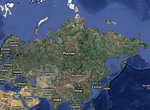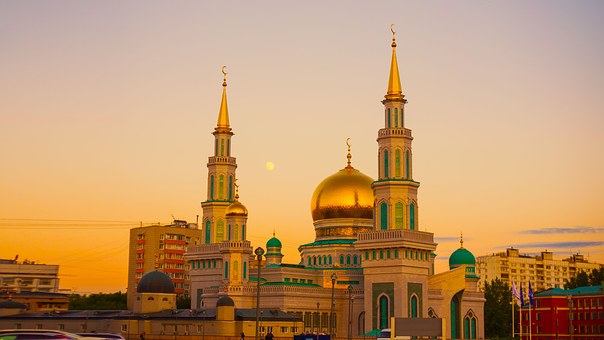Golden
Ring of Russia - Travel Guide by Stan Trof
top
WHAT IS IT: The so
called "Golden Ring of Russia" is a symbolical ring connecting historical
towns and cities to the North-West of Moscow. They represent 1,000 years
of rich Russian history written in stone and wood, from a 850-year old
church in Rostov to a 19th-century log house in the Suzdal's open air museum.
Each of the "golden" towns once played an important role in the history
of Russia and was conected in one way or another with famous historical
figures such as Alexander Nevsky, Ivan the Terrible, Peter the Great and
many others. If you would like to see true, patriarchal Russia, to experience
the grandeur of nature and the magnificence of ancient towns then a Golden
Ring tour is well worth taking. It is one of the most popular routes among
Russian and foreign lovers of old Russian history and architecture.
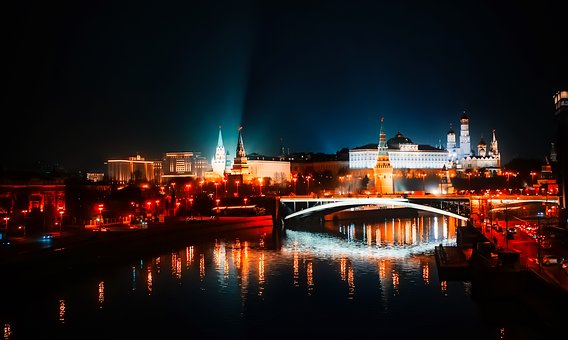
WHAT TO SEE: The cities
and towns of the Golden Ring are listed here in alphabetical order:
Aleksandrov (founded
in 1530, population 68,000) - The town is situated 100 km from Moscow on
the crossway of ancient roads from the largest historic centers of Russia
- Vladimir and Suzdal, Rostov and Yaroslavl, Sergiev Posad and Pereyaslavl-Zalessky.
In 1564-1581 the town was the residence of Ivan the Terrible. In Aleksandrov
the tsar proclaimed the establishment of his select, terror-inspiring corps,
the Oprichniki and signed the harsh conditions of the truce with Poland
and Sweden after losing the long war with Livonia. From Aleksandrov Ivan
the Terrible led his army of Oprichniki to strike at the big trade centres
of Novgorod, Pskov, Klin and Tver. Here the cruel tsar killed his son in
a rage and soon after that left Aleksandrov forever coming back to Moscow.
The very first in Russia publishing house was established in Aleksandrov
in 1576. One of the leading textile manufacturing centres in Russia in
the 19th century.
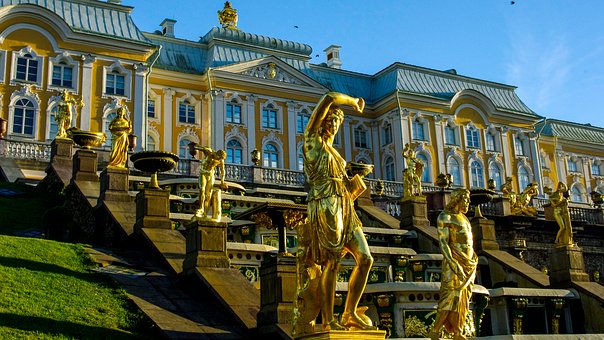
Bogolubovo (founded
in 990, population 4,000) - a tiny quiet town near the city of Vladimir.
The town was named after the Russian prince Andrey Bogolubsky (God-loving)
who built the first fortified settlement here in 1165. It was a strategically
important point overlooking the Kliazma River. Tourists can see remains
of the Andery Bogolubsky's residence including some residential chambers
of the 12th century and the beautiful Church of the Intercession of the
Virgin on the Nerl (1165) which is considered to be one of the finest specimens
of old Russian architecture.
Gorohovets
(founded
in 1239, population 30,000) - The town was founded under Vladimir prince
Andrey Bogolubsky. The town is picturesquely settled on the high bank of
the Klyazma River. Played role as a fortified forepost until 1600-s. Reached
its developmental pick in the 17-th century as a local centre for blacksmithing,
textile-making and making of leather and also as an agricultural trade
centre for grains and flax.
Gus-Khrustalny (founded
in 1756, population 80,000) - Over 200 years ago a merchant built here
the first workshop of glass casting. Today the town is one of the district
centers of Vladimir region, well-known in Russia and abroad as the national
center of glassmaking. The name Gus-Krustalny can be literally translated
as Chrystalline Goose. The old part of the town is a workmen's settlement
of 1900-s. with its own Church of St. Joachim of 1816.
Kholuy (founded 1650,
population 1,000) - The village of Kholui did not begin producing lacquered
miniatures until the 1930s, and though iconography had been an important
trade in the region in previous centuries, Kholui was never bound to any
particular artistic tradition. Rather, Kholui miniatures share some traits
with both Palekh and Mstera art, yet maintain a distinctive lyrical quality
of their own. As in Palekh and Mstera, Kholui artists use egg tempera paints.
Kholui paintings tend to be brighter than Mstera's, though like Mstera,
the pigments used are opaque and the background is usually fully painted.
Sometimes, as with Palekh miniatures, Kholui miniatures will include some
fine gold and/or silver ornamentation within the painting, and Kholui artists
can create fantastic border ornaments on par with those of Palekh. Since
1960-s products of Kholuy's 200 artists have been widely represented and
promoted internationally.
Kostroma (founded
in 1213, population 300,000) - In the past Kostroma was known as "the flax
capital of the north"; it supplied Europe with the world's finest sail-cloth.
The city has been also called as the "cradle of the Romanov dynasty". Mikhail
Romanov, the first of the Romanov dynasty, left the Ipatievsky Monastery
for Moscow in 1613 to become tsar of Russia. During the Polish intervention
in the turbulent years of the early seventeenth century Kostroma was a
significant stronghold for the resistance movement. The city is spreaded
on the left bank of the Volga river. Nowadays Kostroma is an important
industrial center (textile, metal works), a capital city of the Kostroma
province.
Mstera (founded in
1628, population 6,000) - the town takes its name from the little Msterka
River, which flows through it merging with the Kliyazma. It is in Vladimir
Region, but not far from the border with Ivanovo Region, south of Palekh
and Kholui, in breathtakingly beautiful countryside - the one that forms
the backdrop to its paintings. Mstera was a respected center of icon production
until the trade was banned after the Revolution of 1917. Since then its
artists has been creating world-famous masterpieces in the form of lacquered
miniatures. Mstera paintings are frequently larger than those from the
other schools but some fine miniatures are also produced and because of
their rarity are highly prized. Typical themes include exquisite floral
designs with lacy gold ornamentation, the traditional fairy tales, traditional
activities and events such as a winter festival, and sometimes portraiture.
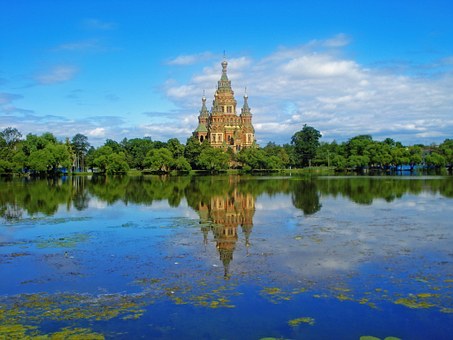
Murom (founded 862,
population 145,000) - one of the oldest Russian cites stretched along the
left bank of the Oka river. The town's name originates from "muroma", one
of the Finno-Ugric tribes lived here 15 centuries ago. Every Russian knows
the name Ilya Muromets. He was a mythical epic hero defending people of
Russia and later became a synonym of superior physical and spiritual power
and integrity, dedicated to the protection of the Homeland. There
is a monument to Ilya Muromets built on a river bank of the Oka river in
Murom. The town survived three Mongol invasions. In the 17th century Murom
became an important centre of various crafts - building, painting, sawing.
There are three working monasteries in Murom.
TRAVEL TIPS: A passport
and a Russian visa are required to travel in or transit through Russia.
To learn more about how to obtain Russian visa please visit Russian Embassy
website. Without a visa, travelers cannot register at hotels and may be
required to leave the country immediately via the route by which they entered,
at the cost of the traveler. Russian customs officers strictly follow document
regulations so travelers are advised to have all papers in order. It is
also recommended that additional copies of passport and visa be kept in
a safe place in case of loss or theft. Elderly travelers and those with
existing health problems may be at risk due to inadequate medical facilities.
Doctors and hospitals often
expect immediate cash/dollar payment for health services at Western rates
so supplemental medical insurance with specific overseas coverage is very
useful. Travelers should be certain that all immunizations are up-to-date,
especially for diphtheria and typhoid. Quality of tap water varies from
city to city but normally is quite poor. Only boiled or bottled water should
be drunk throughout Russia. Crime against foreigners in Russia continues
to be a problem, especially in major cities. Pick pocketing, assaults,
and robberies occur. Foreigners who have been drinking alcohol are especially
vulnerable to assault and robbery in or around night clubs or bars, or
on their way home. Robberies may occur in taxis shared with strangers.
Be aware that public washrooms are difficult to find, and usually you have
to pay there. To use a public phone you will need a token or local card.
International calls can not be made from street phones.
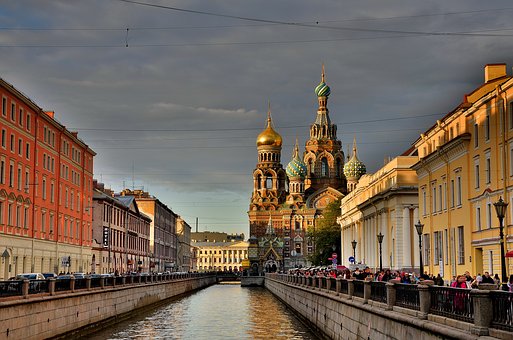
Your mobile phone will work
in Moscow and Saint Petersburg but seldom in regional cities. Taxi fee
must be discussed with a driver before a journey. In the major cities you
can rent a car if you do not mind fairly rugged road conditions, a few
hassles finding petrol, getting lost now and then and paying high rent
price. Public transport in Russia is quite good, cheap and easy to use
though sometimes overcrowded. Restaurants seldom have a menu in English.
Tipping is expected but not mandatory. Signs in English are common on the
streets of Moscow and other big cities. In large cities it is not hard
to find a passerby who can answer your questions in Engish. Electricity
throughout Russia is 220 volt/50 hz. The plug is the two-pin thin European
standard.
We wish you a safe and nice
trip!
top
About the Author: For more
information, descriptions of main points of interest in every town of the
Golden Ring, some photographs and useful links about Russian history please
visit us: www.travelmake.com |



